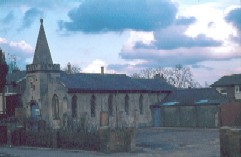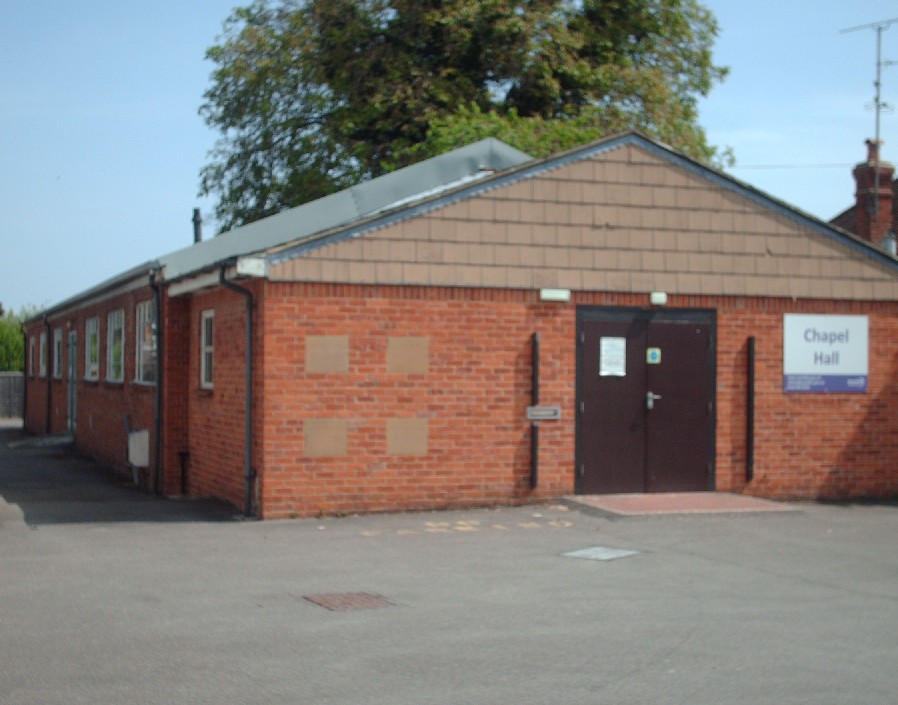The Woodley Chapel - The Middle Years




There follows a period of fourteen years without any written records to give us details of Chapel activities. It can be surmised that some of the responsibilities shared by the field preachers and elders was transferred to the governing quorum at Castle Street Congregational Chapel. A Mr. Hart reported during this period that there were 11 members at Woodley.
National and local events occurring in this period included the death of Queen Victoria, the Coronations of King Edward VII and King George V & Queen Mary, and the establishment of Reading University. A population census in Woodley in 1911 recorded a total of 684 persons. How times have changed!
On 12th March 1913 the members of the Woodley Chapel sought to regain independent government of Chapel affairs, the Castle Street representatives reserving the right to intervene solely in the case of violation of the Trust Deeds. In passing it is noted that at this time the Chapel Keeper was paid four pounds per annum.
The commencement of the 1914-1918 war stimulated various avenues of service such as joining a course in sick nursing, collecting funds to send Christmas puddings to men in the forces, and the formation of a Band of Hope. The following extracts from a letter from a Reading Congregationalist indicate that there were also some lighter moments.
My parents were members of Castle Street Congregational Church, Reading, and lived at Whitley.
Woodley Chapel was then a daughter of Castle Street and was served by a rota of lay preachers, of which my father was one. In the summer I often cycled with him when he was taking the service. This would be about 1915-1918 I should think. On Good Friday we always walked with a group from Castle Street to Woodley Chapel, going by a footpath through the woods near Earley Station. Good Friday was not observed in a very solemn manner, I am afraid. Although the festivities did not begin until the afternoon, the Sunday School then had sports in the field next to the Chapel, then tea, and then in the evening prizes for Sunday School attendance were given, followed by a short service.
The Reading people certainly enjoyed this outing into the country at Easter time..."
Whatever activities were enjoyed, the serious side of Christian fellowship was not ignored. In the early days of 1917 a suggestion was made requesting the services of an honorary pastor, and it is recorded that 'two ladies became converts to belief in Jesus Christ'.
In 1930 a Special Service was arranged to publicise the work of the N.S.P.C.C. Among the various applications received by the church officers was a request from the Committee of the local Labour Party for the use of 'tables and urns' at a future date. One wonders if they had any more success than the brethren of the Agricultural Union a century earlier!
During 1935 Minutes of meetings were more fully descriptive and some were signed! In February the funds allowed for the purchase of a new anthracite stove, new gates and new oil lamps. A request came from the Free Church Council Committee appealing for help towards the cost of building a church at Bognor as a memorial to King George V.
Giving to the church progressed from the box at the door to the introduction of collections at church services, resulting in increased income and a decrease in the treasurer's headaches. Another radical change accepted was the playing of organ music to replace the pre-service hymn-singing - perhaps voices were becoming overtaxed before the preacher's arrival. It is also recorded that the trustees were consulting a firm of builders about 'other buildings' on the church's land.
A forerunner of later ecumenical activities was an invitation from Rev. Donne, Vicar of Woodley's Anglican Church, for members and choir to join in worship on Coronation day - the Coronation of King George VI and Queen Elizabeth.
While money is being raised for extensions to the buildings a request for a gas light over the front door is rejected! No reason is apparent, although electricity is mentioned some seven months later.
The Band of Hope continued to flourish and in 1938 won a shield for the greatest increase in membership. A Reception Service was held to welcome five new members to the congregation, and plans were made to inaugurate fortnightly prayer meetings with members of the Anglican Church, meeting alternately on each others' premises.
In the pre-war period of 1939 there is reference to a 'donation being available for the poor of the village'.
The war had its effect on the fellowship, the London County Council Evacuation scheme sought the use of the premises for the continuation of the education of evacuees, and the A.R.P. (a body of volunteers who took air raid precautions) expressed their doubts as to the safety of the building in the event of an air raid. It was agreed 'as a wartime measure only' that the Schoolroom could be hired once a month for talks and lectures by women members of the Labour Party at a fee of 1/6 an afternoon (seven and a half pence in today's currency!). The local council wrote in 1942 to inform the `powers that be' that they intend to requisition the iron railings towards the war effort.
Three items requiring decisions in 1945 were the future of the Sunday School, the hire of the Schoolroom to a sewing class and modern hygienic toilet facilities. Then the overworked or overplayed organ (an American organ or harmonium) demanded attention; and collections were being donated to the rebuilding programme of churches in Europe.
In 1950 the members set to to clear the ground and lay a new concrete path while the Harvest Festival collections were given to the London Missionary Society and the International Bible Reading Association.
A visiting preacher complaining about the lack of adequate vestry facilities led to the setting up of a new Building Fund.
Somewhat surprisingly the church had to apply for a licence for a wedding to be solemnized in the Chapel; 116 years and this the first time that a wedding had been held there.
Illness and resignation caused three vacancies on the Deaconate. Two months later three new deacons were duly elected. The choir undertake a performance of 'From the Manger to the Cross' at the close of the year.
The main priority during one meeting in 1952 seems to have been a deep concern about the need for further youth work to consolidate the allegiance of young people to the church and discipleship. This concern is translated into action by the proposal to arrange a Young People's Service every three months.
The first of the Garden Parties to raise funds for the new building was held on 7th June 1952.
Excitement permeates the plans for the following months - church plans, parish plans, local community plans. Functions of every kind crowd the weekly programme. Money has to be raised, not only for the church hall, but also, it is agreed, to support funds for the Woodley Coronation Hall. Arrangements are made for a Coronation Anthem to be sung instead of the vesper on 31st May 1953, also a recitation to be given during the service by one 'M.K.'
Serious consideration was required of the members with respect to the matter of joining the Congregational Union in England and Wales. Extracts from the minutes of a special meeting called for this purpose are as follows:
Meeting specially convened for the purpose of hearing the Secretary of the (Berks., Bucks. and South Oxon) County Union, representing the Congregational Union (U.K.)
Friday 2nd October '53 Ten members present. Opening devotions were conducted by the Church Secretary. When these were completed the Guest Speaker, Mr. F.T. Smallwood was introduced as Secretary of the Berks., Bucks. and South Oxon. Congregational Union.
Who spoke at some length on the function of the Union and enlightened members upon some points which were raised, two important ones being,
Mr Smallwood appealed for financial support for the Home Churches Fund. He also read the "Message" from the May Meetings at the Albert Hall, commending it to us for careful thought and study.
Ironically, eight years later in the National Congregational Churches Association, plans were being made to bring into being the United Reformed Church. Some Congregationalists objected to the scheme on the basis that early Congregationalists dissented from a larger organised church to form `gathered churches' on scriptural guidance and doctrine. The issues of the debate which ensued are well outlined in a paperback entitled 'The Story of the Federation - Congregationalism 1960-1976' by Rev. R.W. Cleaves.
Meanwhile the work of planning the buildings continued, and the Bible Class Fellowship, blessed by God, became instrumental in fostering seven young people to offer themselves as new disciples of Jesus Christ. These young people also involved themselves in the formation of a Junior Church. (Not to be confused with the Sunday School which we now know as Junior Church).
Another resolution officially laid down the types of activities that would be permissible on the Church premises in the future. Concurrently a new awareness had evolved of the churches' need to be more active in outreach towards the new residents in hundreds of homes newly erected in housing estates within walking distance of the Church on the Corner.
1955 is remembered as the year when the parent church at Castle Street ceased to function, while encouragement is given to the establishment of a joint pastorate with fellow Congregationalists at Twyford. A young man who was offered the appointment of shepherding both chapels declined the offer.
The fact that correspondence about Trust Deed matters and financial loans included officers of the Congregational Union in its addressees implies that the members of the Woodley Chapel did not hold overriding qualms about joining the national Congregational Union of England & Wales. This proved to be providential when, after the stone laying ceremony for the new Hall on 12th July 1958, legal costs were reduced and another loan was arranged. The four brown stones were laid in the front wall by Mr. W. E. Bradley, Mr. F. T. Smallwood, Mr. C. Storer and Mr. W. T. Finch.
Two hundred people expected for tea! And complaints later, not about lack of food, but that some speakers could not be heard! The occasion was the Opening and Dedication of the New Church Hall, Loddon Bridge Road, on Saturday 14th March 1959 by the Moderator - Rev W.J. Coggan, M.A. In this event blessings were shared, thanks given for past years of hard work and hopes expressed for future blessings.
A note of optimism is apparent in the Minutes of April 1961, there being mention of an increase in the size of the congregations and in the numbers of members. Later in the year the Deacons of Woodley and Twyford met to discuss the possibility of a joint pastorate as the minister then at Twyford was retiring. High praise was expressed that witness had continued so effectively without ministerial oversight and it was hoped that with the establishment of a joint pastorate the work would proceed even more effectively.
Spiritual growth and population expansion continued to be partners in the priorities of the business meetings. Towards the end of 1961 an offer of help is received from Park Congregational Church, to steer the visitation programme before the arrival of a minister and to supervise fuller mission activities.
Page last updated 18th May 2020.